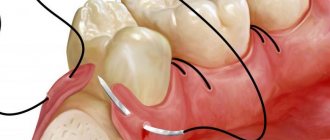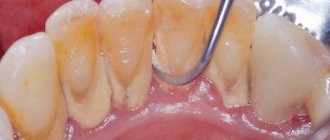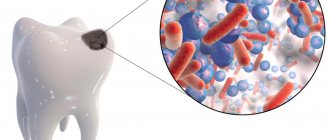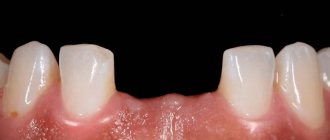Miswak is a complete replacement for conventional teeth cleaning products. It is used for both hygienic and therapeutic and prophylactic purposes in the treatment of diseases of the oral cavity. The use of miswak requires some additional skills, so it is recommended that you become familiar with it before you begin to actively use it.
What is siwak (miswak)?
But how can you avoid health problems caused by using toothpaste?
Not brushing your teeth? You should not resort to such radical measures! A natural component – sivak – will help. Another name for this unique hygiene product, used by humanity for thousands of years, is miswak. What is sivak (misvkak)? Sivak is a small stick made of arak wood. In the scientific world, arak is called Salvadora Persica; the plant grows in China, India, the Philippines, and the Middle East.
Sivak is used like a toothpick. The tip of the stick splits, easily penetrating into the most difficult places, removing food debris and bacteria accumulated between the teeth. Miswak is especially widespread in Muslim countries. An important point: the herbal remedy is mentioned in the Quran, so it can be considered part of the treatment according to the Sunnah. Prophet Muhammad, peace and blessings of the Creator upon him, used siwak to clean teeth and advised his students and fellow believers to use this stick.
Composition of Miswak Root
- Flavonoids. These substances protect against the effects of free radicals. Flavonoids prevent tissue damage due to an excess of histamines - substances that are actively produced during an inflammatory or allergic reaction.
- Alkaloids. This component has a bactericidal effect and has a positive effect on the condition of the gums.
- Tannic acid. Helps clean teeth and gums, promotes healing of wounds, including purulent ones, in the oral cavity and stops bleeding. The substance accumulates in layers on tooth enamel and prevents the development of caries. Products containing tannic acids are prescribed for stomatitis and gingivitis. In addition, tannic acid has a calming effect on digestion.
- Silica. Helps eliminate stains on teeth.
- Bicarbonate of soda. The substance helps clean the surface of teeth, neutralizes acids, and preserves the natural shine and color of enamel.
- Essential oils. They have antiseptic, anti-inflammatory and antimicrobial effects. Essential oils can relieve pain and prevent the formation of tartar.
- Vitamin C. A natural antioxidant that promotes teeth whitening and tissue repair. Vitamin C strengthens the body's natural defenses and tones all systems.
- Fluoride and calcium. Prevent tooth decay and ensure remineralization of enamel.
Additionally, miswak contains styrene, trimethylamine, saponins, mineral salts and sulfur substances. This rich composition explains the beneficial effects of miswak on the entire oral cavity. The product removes plaque and brightens the enamel to a natural shade. Thanks to essential oils and trimethylamine, it has antibacterial and anti-inflammatory properties, so it can be used for diseases of the gums and tongue.
Many dentists recommend miswak to prevent tooth decay, reduce toothache and bleeding gums. In addition, the plant has a beneficial effect on the functioning of the immune, digestive and visual systems, and also improves overall tone.
History of application
Miswak is very popular in the Middle East and Southeast Asia, that is, where the Arak tree grows. Local residents dig up the flexible long roots of the plant (or cut off branches) and cut them into sticks of the required length. The twigs make a juicier and more flexible miswak, and the roots contain more nutrients.
This practice of making oral hygiene products goes back thousands of years. Salvadora Persian sticks were used by the Babylonians long before our era. Later, the tradition of using dental sticks was supported by Islamic countries. The Prophet Muhammad himself brushed his teeth with siwak and recommended it to others.
Today, miswak has become widespread among vegans and supporters of a healthy lifestyle, as well as those who prefer natural hygiene products.
Where does miswak grow?
The tree from which miswak is made is called “Salvadora persica” (from Latin). In Arabic, the name of this useful shrub is “Arak”. Grows in subtropical and tropical climates. The “toothbrush tree” can be found in India, Pakistan, North Africa, and the Arabian Peninsula. This is a small shrub up to 5 m high. The bark is brown, with a pleasant smell. The leaves are edible, with a mustard flavor (which is why arak is also called mustard tree). The leaves are used in India as a green for vitamin salads.
Salvadora Persiana grows in desert and clay soils. Harsh growing conditions contribute to the accumulation of large amounts of biologically active substances in the plant. This is necessary so that the tree can survive in unfavorable conditions.
Advantages
A natural “brush” (another name is sivak) has advantages comparable to the useful qualities of modern cleaning devices. Judge for yourself: miswak contains anti-inflammatory and antiseptic substances, the presence of which makes applying paste or powder to the teeth unnecessary.
Among the “advantages” is the presence in the composition:
- fluorine;
- tannins;
- flavonoids;
- alkaloids;
- fragrant resins;
- essential oils.
In terms of content, the stick of the Salvadora Persian tree is similar to toothpaste and in some ways even surpasses it: the components are natural.
For those who are wary of “chemistry”, this point is important. Fluoride strengthens enamel, tannins and flavonoids prevent inflammation, essential oils stop the proliferation of bacteria, and give fresh breath. A nice bonus: miswak contains silicon dioxide, which whitens teeth.
This occurs without damaging the enamel, which, unfortunately, is experienced by patients after professional whitening in the dental office. Silicon destroys pigmentation and fights soft plaque. This is not all the advantages of the siwak. It is convenient for patients because:
- fits in a plastic bag that you can simply put in your pocket;
- Available for use by people of all ages - from babies to the elderly.
A modest stick - a piece of a branch of an outlandish Asian plant - is inexpensive, but has so many advantages that it’s time for many of us to think about buying it. Many - but not all? Yes, there are contraindications.
Chemical composition of siwak
The beneficial properties of siwak are associated with its excellent chemical composition. Miswak contains over 25 natural highly active components that have an extremely beneficial effect on human health. This:
- tannic acids;
- soda bicarbonate;
- cellulose components;
- essential oils;
- aromatic resins;
- substances of the alkaloid group;
- salts of useful minerals;
- fluorine;
- substances of the sulfur group;
- vitamin C;
- silicon in the form of dioxide;
- saponin;
- flavonoids;
- styrene;
- trimethylamine.
One can only be amazed at the wisdom of nature, which has combined in one plant a chain of components that are beneficial specifically for the health of teeth, gums and oral mucosa! This makes Sivak an absolutely unique natural product.
Useful properties of siwak
In 2012, scientists from one of the research centers in Germany decided to conduct an interesting experiment in which 100 people took part. The first fifty participants were given toothpaste for a month, the second half of the subjects were given miswak. The results were simply amazing!
Those who used toothpaste complained of poor condition of the mucous membrane, pain in the gums, and the appearance of ulcers in the mouth. In contrast, the group using sivak showed a dramatic improvement in the condition of the oral cavity. The teeth of the experiment participants became whiter, and many stains on the enamel disappeared. Scientists explained this effect by the high concentration of silicon and other bleaching substances in arak wood. The components of the sulfur-galvanic group suppressed the growth of bacteria, preventing the development of caries and bad breath.
This is interesting: Bad breath causes and treatment in adults
Trimethalamine contained in sivak relieved the experiment participants from inflammatory and abscess processes in the oral cavity. Using a toothpick for children relieves pain when new teeth appear. Fluid components make miswak an excellent means of preventing caries in children.
As a result of the experiment, German scientists recommended that everyone use a “magic wand” made from arrack wood as a toothpick.
In 2021, the findings of scientists from Germany were confirmed by their American colleagues. In particular, it was found that sivak has a calming effect on the mucous membrane. This is due to the suppression of the viral and pathological environment. After the first use, 80% of bacteria and microbes die. This prevents the development of caries, periodontitis and even scurvy. The beneficial effects of miswak on teeth do not stop immediately after use: the substances act for 2 days.
In addition to its purely hygienic effect, the herbal preparation also works as a dietary supplement. It is known that in the oral cavity, especially at the junction of the gum and tooth, there are a huge number of biopoints responsible for the functioning of the sensory organs. In addition, biopoints are associated with the jaw joints, frontal sinuses and spinal nerves. The connection between biopoints and nerves is especially important, because the condition of our muscles, joints, and limbs depends on the proper functioning of the nervous system. Biopoints are also involved in the functioning of other organs: liver, heart, lungs, blood vessels, stomach, spleen, intestines, hormonal glands, bladder, etc.
Using sivak, we massage the bio-points of the oral cavity. This effect eliminates pain, relaxes muscles, and promotes a speedy recovery from osteochondrosis. Daily use of miswak is an excellent prevention of more than 70 diseases. In addition, this procedure allows you to gain mental clarity and improve memory.
Note! If you just can’t quit smoking, the same siwak will help you: using a stick made of arrack wood relieves the craving for tobacco and makes it easier to quit the bad habit.
What else is sivak useful for?
As already mentioned, miswak is mentioned in the hadiths of the Prophet. But this is far from the only description of the beneficial properties of a mouth cleaning stick. Thus, the great scientist of Islam Ibn Qayim in his work “Medicine of the Prophet” described in as much detail as possible the beneficial properties of siwak. Ibn Qayyim identified the following features of arak wood:
- prevention of caries, periodontitis;
- treatment of gum and dental diseases;
- high-quality cleaning of the entire oral cavity;
- refreshing effect;
- wound healing;
- antibacterial effect;
- decreased salivation;
- getting rid of bad breath caused by poor condition of teeth and gums;
- prevention of scurvy;
- improving vision by influencing the nerve endings in the oral cavity associated with the eyeballs;
- removing stains on enamel, tartar (it is extremely difficult to remove tartar using a toothbrush and paste, since most of it is concentrated in a hard-to-reach place, on the neck of the tooth);
- treatment of cords, voice restoration;
- improving the condition of the digestive system, treating the stomach and intestines, normalizing stool;
- general strengthening and tonic effect;
- return of mental clarity, acceleration of thought processes, getting rid of lethargy and apathy;
- positive effect on the male reproductive system.
In other words, miswak is a true storehouse of health. A person who uses this amazing remedy will strengthen both body and soul; he will not need doctors.
Flaws
If you have braces installed, you cannot use a wand. Reason: In preparation for use, the miswak is “fluffed,” that is, one end is separated into fibers. These woody “threads” slide along the front and back surfaces of the teeth, also getting into the interdental spaces and cleaning out food debris. If the thread gets stuck in the braces, it can damage them. It is difficult to extract the fibers yourself. You'll have to go to the dentist.
The second risk group is people with hypersensitive teeth. They have thin enamel that wears off with rough impact. And the next stage is caries.
Difficulties also arise for those who took a stick that was too hard and poorly prepared it for “work.” Sharp villi damage soft tissues when pressed. As a result, instead of benefit, we get harm: small wounds are applied to the gums, it bleeds, and if an infection occurs, the first symptoms of gingivitis or periodontitis will appear.
Be especially vigilant if you are over 50 years old. At this age, periodontitis is common and leads to pocket formation, halitosis and tooth loss.
Sivak, as we see, is not a panacea for oral diseases. Therefore, remember to be careful when using it. In addition, some complain that it is difficult to reach the back row of teeth with a stick.
Contraindications
The only contraindication to the use of Sivak is individual intolerance. It is undesirable, although possible, to use it when wearing braces and skyes (dental jewelry), since the bristles can get stuck in the structures.
There are no restrictions during pregnancy and breastfeeding. When brushing your teeth with mustard tree root, no harmful components enter breast milk and blood.
Curettage is divided into open and closed types.
Closed curettage: features of the method
Closed curettage is used to clean periodontal pockets whose depth is less than 5 mm, without inflammation affecting the bone tissue. Compared to the open type, this operation is much simpler and is performed without cutting the gums - deposits are removed using ultrasound, as well as special hooks that are inserted under the gums.
However, this method also has disadvantages - there is no overview and visibility of the whole picture, so the method is not always effective. There is a risk that deposits will not be completely removed. Therefore, closed curettage is recommended in the presence of small pockets, in mild and moderate stages of periodontitis and periodontal disease, as well as in cases where open surgery is not possible for any reason.
Open curettage: features of the method
This is a full-fledged surgical operation. It is necessary if the deposits are located deep under the gum - in a periodontal pocket more than 5 mm deep. It is carried out as follows:
- anesthetic is administered
- the gum is cut, which peels off from the tooth - this way the root is exposed and access to the bone tissue is provided,
- cleaning and polishing of tooth roots, thoroughly polishing, antiseptic treatment of tissues,
- if there is resorption of the jawbone around the roots of the teeth (especially important in case of periodontal disease), bone chips or artificial material are replanted,
- the detached flap of gum is returned to its place and sutured,
- A bandage with a medicinal preparation is fixed on top.
“Open gum curettage is a very effective procedure that can significantly improve the condition of inflamed tissue. Recurrence after it is practically excluded, since the removal of granulations is carried out very efficiently - the surgeon has access to the entire subgingival area for work.”
Zhilenko Evgeniy Aleksandrovich, Implant surgeon, periodontist, orthopedist Work experience over 17 years make an appointment
Open gum curettage is often combined with flap surgery. The formation of periodontal pockets is quite detrimental to aesthetics - the gums become loose, their contour is disrupted, and they hang over the teeth. That is why part of the mucous membrane is cut off, thereby correcting and leveling its position.
What is the price
The cost of a natural toothbrush varies depending on the length and thickness. A small stick 15 cm long costs about 150 rubles. They are sold in vacuum packaging individually. Some manufacturers add flavoring - lemon, mint.
This is interesting: What is irrigation in dentistry and everyday life - this is a new look at oral care, advice from dentists
Sivak Sewak al-Falah - made in Pakistan, 15 cm long, sold in vacuum packaging one piece at a time, cost about 150 rubles.
The Al-Khaleej branch is a black stick, does not require the use of toothpaste, costs 80-100 rubles.
Sivak Khair - made in Pakistan, has a length of 15 cm, cost - 90-120 rubles.
At the same time, you can purchase a case for convenient storage. You should not immediately switch to cleaning your mouth with such a stick. It is better to use it between regular teeth brushing, and when you have the skills to clean each tooth, then you can switch to the siwak stick. You can’t do without consulting a dentist and a specialist’s opinion on this matter.
Price
The use of mustard tree roots is one of the most affordable ways to care for teeth. Despite its exotic nature, the price of miswak is acceptable for a person with any income level.
The average cost of this product is from 60 to 150 rubles. for 1 piece The price depends on the specific manufacturer and type of packaging. Sticks in a special storage case are more expensive, while in a vacuum bag they are cheaper. The easiest way to find this product is in online stores specializing in oriental or environmentally friendly products. The price is valid for October 2021.
Mustard root toothbrush is popular for many reasons. It is environmentally friendly, safe for health, effective and affordable. Is it right for you? You can only find out by trying it yourself.
Author: Yana Semich, especially for Karies.pro
How to use
Step-by-step instruction:
- Open the vacuum packaging (original products are stored and prepared for sale only this way to avoid damage).
- Wash the miswak.
- Remove the bark from one end. It peels off easily - with your hands or a knife.
- Chew the future “brush”. It will unfiber and be ready for use.
- Start cleaning.
Making it a miswak is more difficult and you have to adapt. Starting with the upper jaw, brush each tooth using a sweeping motion. The speed is slow at first. You will do it in 10–12 minutes. The procedure takes longer than simply using a brush. But there are “advantages”: sivak cleans the spaces between teeth and makes the enamel lighter. True, this effect will appear after 2-3 procedures.
Video review from Tatyana about her discovery:
After brushing your teeth, rinse the stick and put it in an open container.
Terms of use
- Peel a centimeter of miswak from the bark. This can even be done with your teeth: bite around the circumference and pull back.
- Gently chew the peeled end to soften the stick and separate the fibers. You need to chew the stick with your side teeth 5-10 times. Thick sticks are slower and more difficult to chew than thin sticks.
- Brush your teeth as you would with a regular brush. You can massage your gums during the process. It is recommended to brush your teeth with the side surface of such a brush, and with the tips – the space between the teeth. The inner surface of the teeth should be cleaned using sweeping movements. You can chew a small piece of the stick and roll it over your teeth.
- Since the surface of the miswak is not designed to be cleaned, the procedure may take a little longer than using a regular brush.
After the procedure, the used part must be cut off and the miswak returned to the package to prevent it from drying out. The package with miwak should be kept in a dry place at room temperature. If the stick is dry, it cannot be used without first moistening it, as it becomes hard and can injure the gums.
When the product has dried out or diminished, you can leave it overnight in warm water and dry it a little in the morning. This will allow the stick to absorb moisture and be ready for use again. It is advisable to moisten only the part that is needed for one-time cleaning.
Miswak does not harm tooth enamel, because it contains no abrasive substances. In case of inflammation or increased abrasion of the enamel, it is necessary to use softer sticks and make sure that they do not dry out.
If an infection develops in the mouth, the use of miswak may be accompanied by tingling. Until the infection is eliminated, it is advisable to use a fresh part of the stick each time and brush your teeth more often. You can also chew small pieces of miswak to quickly cope with the disease.
How to properly brush your teeth with a miswak stick
- It is recommended to move the stick up and down (for the front teeth). Both the front and the inside need to be cleaned.
- The back teeth should be brushed especially thoroughly, including the chewing surfaces. That is, you need to clean your teeth from all sides.
- Don’t forget to clean your tongue, especially if there is a strong coating.
- If necessary, do an additional light massage of the gums. To do this, you need to pull the upper/lower lip with one hand and massage the gums with the other.
Brush your teeth for a few minutes. The more thoroughly the oral cavity is treated, the better the therapeutic effect.
Cautions:
- Do not put too much pressure on the enamel of teeth and gums, so as not to cause tissue damage;
- It is not recommended to hold the stick in your fist, as it is more difficult to control the force of pressure;
- You should not suck out the miswak so that the beneficial substances remain and act in the oral cavity;
- With thinned and sensitive enamel, it is recommended to brush your teeth very carefully.
Not only adults, but also children can use miswak for dental hygiene. Children should do this under adult supervision. It is necessary to ensure that children do not bite off or swallow the brush to eliminate the risk of lint getting into the windpipe.
The use of miswak is also permitted if there are restored teeth. But it should be taken into account that the enamel of artificial teeth will remain the same, while the remaining teeth will become whiter.
It is possible to use a dental stick during pregnancy, as well as during breastfeeding. The natural composition of miswak is beneficial for the body of a woman and child.
Flaws
Along with the extensive list of advantages of miswak, it also has several disadvantages :
- It is difficult to clean the outer teeth and the inner surface of the teeth with a small brush .
- Also, due to the small area of the bristles, brushing your teeth will take longer than usual. Cleaning will take 5-10 minutes , as opposed to the usual 2-3 minutes when using a traditional nylon brush and paste.
- After using miswak, you will not have the usual “minty breath” as when using paste.
Restrictions for pregnant women and children
Miswak is allowed to be used during pregnancy and breastfeeding. The product does not affect the development of the child and does not contain allergic components. It is believed that miswak can affect the taste of breast milk, but this varies from person to person.
This is interesting: Toothpaste against bleeding gums - the most effective and fastest
Sticks can be given to children from 5 months to chew. The product helps ease teething, relieve discomfort and relieve swelling. Parents should control this process; they should not give a miswak stick to their child unattended, as they may choke or injure their throat.
Treatment with siwak according to the Sunnah
One of the hadiths contains the following words: “Sivak cleanses the mouth, and this pleases the Lord. Every time he appeared to me (the Prophet, peace be upon him - editor's note), Jabrail instructed me to use siwak, I was even afraid that the use of siwak would be made farz (duty). If I weren’t afraid of burdening my ummah (Muslim community - editor’s note), I would make it a duty.”
That is, the use of siwak is a matter pleasing to Allah, it is treatment according to the Sunnah, which is extremely important for Muslims.
Miswak is a natural substitute for toothpaste, toothbrush and dental floss. You will quickly notice improvements in the condition of your teeth and entire oral cavity.
In addition, siwak has a pleasant taste with a slight bitterness; it easily “burns” the skin. Sticks with a diameter of 1 cm, packed in vacuum bags, go on sale. Sivak can be stored in this state for about a year.
Before use, the stick must be held under running warm water. Peel the tip from the bark to about 1 cm and chew. Bristles will appear at the end, almost like on a toothbrush, and you should use them to brush your teeth. After brushing your teeth, run the bristles across your tongue - this will get rid of bacteria and unpleasant odor.
Consumer Reviews
Below are some customer reviews. If you have something to say, leave your feedback in the comments below the article, it will be useful to our readers.
Succumbing to the advertising of an online store, I bought a stick of miswak “to try”, fortunately the price was low. I opened it, washed it with water, chewed it, everything according to the instructions. The hot water made the bristles soft and brushing my teeth was pleasant. I was surprised at the pleasant feeling of cleanliness on my teeth, there was no plaque, and this despite the fact that I just cleaned them with a branch, without any product! I liked the effect, I will continue to brush my teeth with this stick!
I bought a miswak on the advice of a friend. I liked that there was no pronounced taste or smell, there was a slight bitterness, like cigarette smoke. It cleans well, but it takes more time than using a regular brush. You can leave it for evening cleaning, or take it with you and use it throughout the day, and you don’t have to carry the paste with you.
How to choose a quality miswak
The sticks may have a salty taste if the plant grew in brackish soils. Such a miswak may even have a white coating, but at the same time it is of quite high quality. A sweet taste indicates the addition of synthetic ingredients to increase shelf life. It is better to buy siwak without additional preservatives. The natural substances of the plant are quite enough to protect against spoilage. Provided that the miswak is of high quality and packaged fresh. It is also not recommended to purchase siwak with additional flavors, for example, mint, since in this case synthetic flavors are used.
Thin sticks (up to 1 cm in diameter) are more tender, easier to chew, and more juicy. They are best used for painful gums that are prone to bleeding. Thick ones have hard fibers, so this brush has the best whitening effect. But its coarse fibers penetrate harder into hard-to-reach places, making it more difficult to clean the side surfaces of the back teeth.
A good siwak has a strong, pleasant aroma. The stick should not be too thick or too long. The average length is 15–20 cm. This miswak is best suited for comfortable use.
FAQ
The remedy is not as popular here as in Muslim countries, and therefore there are still a lot of questions.
Is it possible to give a stick to children and at what age?
Due to the anti-inflammatory properties of the product and its natural composition, Miswak can be given to children after four months. But it should be used under strict parental supervision to prevent accidental ingestion of lint.
When is the best time to trim used lint?
It is best to trim the bristles after each use to prevent bacteria from accumulating there, or after the stubble becomes very thin.
How long to chew?
Here you need to build on the person’s preferences and chew until the hardness becomes comfortable for use. As a rule, you need to chew for at least five minutes to achieve the separation of the end into fibers. Before use, it must be soaked in water.
Is use allowed on restored teeth and with removed nerves?
Yes, there were no complaints from consumers about this. Just keep in mind that the product can only whiten natural enamel. Therefore, the color of the artificial material may subsequently begin to differ from the rest of the teeth.
Can I use the product during pregnancy and lactation?
During pregnancy, the product can be used due to its natural origin. There are no substances in the composition that can cause uterine contractions or cause an allergic reaction in the child.
Will using this product damage the enamel?
Miswak does not contain abrasive substances, so it does not have a negative effect on the enamel. But if the enamel is thinned or prone to abrasion, then you need to use the stick carefully, without pressing on it with force.
Alternatively, you can use a thinner size. In addition, you should monitor the condition of the product, avoiding severe drying out.
What is the expiration date?
In undamaged packaging it can be stored for 12 months, but at a temperature of +15 degrees. After opening the package, the stick must be completely used no later than three months.
What does the white coating on a twig mean? Is she spoiled?
No, everything is fine with Sivak if the expiration date has not passed. In general, the white coating is formed due to the dried salt contained in the plant itself. This is quite normal for this product.
Piglets, domestic pig, sow and pig farming, types and what they look like
Should you just brush your teeth with the brush or use toothpaste along with it?
If you use Miswak sticks, there is no need for toothpaste. The product perfectly replaces both a brush and toothpaste.
How to store
Are you going to keep a miswak in the bathroom next to your brush? Okay, but then use it every day. Bacteria will not have time to “settle” on it.
Are you planning to bring out the “heavy artillery” a couple of times a week? Store the stick in the refrigerator in an open container. After two uses, trim the bristles, further cleaning the bark. And do the same if the bristles become sparse.
Use the miswak until it runs out.
What's the catch?
The miswak stick has practically no contraindications.
It can be given to children from 5 months - of course, under the strict supervision of adults. You can brush your teeth during pregnancy and breastfeeding. Allowed to be used for any chronic diseases.
The only prohibition is individual intolerance to the acara tree, but it is extremely rare.
But miswak has some disadvantages: reviews talk about them in detail.
- Specific taste. People who have used siwak with a toothbrush admit: the stick tastes like horseradish. There is no need to be afraid: after hygiene procedures, your breath does not smell like horseradish. But it’s hard to forget this taste. On the other hand, many people like this taste and this is a rather subjective drawback.
- Inconvenient shape. Meswak is still not a flexible plastic brush, but an ordinary branch. It simply cannot penetrate into “hard-to-reach places,” so the back jaw and the inside of the teeth may remain uncleaned.
- Uneconomical. The wood brush itself is inexpensive, but it lasts only 2-3 weeks. And if you don’t take care of storage, then for an even shorter period.
Plus, chewing a stick won't get rid of bad breath. While fragrant menthol pastes can mask the smell for a while, neutral siwak will not do this. In addition, in most cases, the cause of the unpleasant odor is problems with the gastrointestinal tract, and only a visit to a gastroenterologist can solve them.
Sources:
- https://www.tauba.ru/lechenie-bolezni/sivak-i-ego-poleznyie-svoystva-dlya-zdorovya-polosti-rta.html
- https://kcdc.ru/rot/misvak-palochka.html
- https://osp-sakhalin.ru/uhod/sivak-dlya-chistki-zubov.html
- https://DrZubastik.ru/chistka-zubov/palochka.html
- https://CreateSmile.ru/miswak/
Recommendations from Dr. Zubastik
A sprig of Salvadora Persianum brings benefits to people when used correctly. But you can’t call it a panacea: it has a number of contraindications and does not completely replace a brush and therapeutic and prophylactic paste. Therefore, brush your teeth with a siwak from time to time, following the same principle as when using floss. Let it become an addition to hygiene procedures.
In this video you will see a clear example of using miswak:
Visit your dentist every six months to a year to make sure everything is in order. No brush or magic wand can replace professional treatment. Take care of your dental health – the condition of your entire body depends on them!










